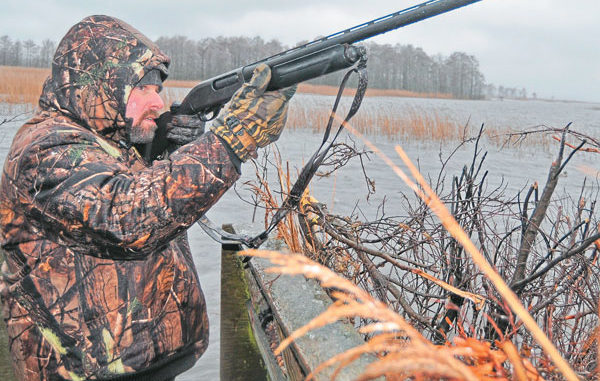
Some of North Carolina’s best waterfowl hunting is open to the public — if you apply for a permit.
It’s said that you should be prudent about what you wish for, because you might get it. Then again, one man’s disaster can be another’s opportunity.
Ice and sleet pelt down during a permit-only waterfowl hunt at Lake Mattamuskeet.
A perfect example was the last day of the 2010 waterfowl season at Lake Mattamuskeet.
Duck hunting, which I gradually have learned to enjoy, always had been difficult to do because of my work schedule — except for the last few days of the season in January. That’s when I’d meet near Swan Quarter with some friends from the Hunters Helping Kids organization for a few days hunting ducks and tundra swans, enjoying their company, tall tales and outstanding food.
However, the duck hunters in our group found that waterfowl had increasingly become gun-shy, having to avoid a season-long gantlet of steel and composite shot. Also, our late-season trips seemed to correspond with warm fronts, so ducks didn’t need to leave the nearby impoundments that belonged to, ahem, financially-blessed hunters, and that attracted most of the birds.
There were other assorted disasters, including the time part of our group decided to beach their craft on Great Island’s windward side, with the stern facing the waves of Pamlico Sound. When they returned at dark, the boat was gone. Well, it wasn’t actually gone; it had sunk after waves filled it with water.
One of my buddies, Bill Slate of Monroe, grew up hunting ducks along the St. Lawrence Seaway in upstate New York. We figured we’d apply for a permit hunt for January 2010 at the Mattamuskeet National Wildlife Refuge. We wouldn’t have to worry about sunken boats or setting up blinds. All that would be taken care of at the refuge. Not only that, we figured some of the thousands of ducks we’d watched during photo trips to the refuge could be ours for the taking.
It was a good idea — for Slate, who was used to hunting ducks in arctic weather conditions in his native New York. And it probably would have been okay for me if I hadn’t been suffering some undiagnosed health problem that sapped my physical energy and if a winter storm hadn’t blanketed eastern North Carolina. Even with that, if we’d chosen an easy-to-reach blind, it might have been an enjoyable experience.
It just didn’t work out that way.
“This is great,” Slate said as he unloaded two bags of decoys from his Suburban in the pre-dawn darkness in the middle of a rip-roarin’ nor’easter.
Slate meant temperatures at the freezing mark, a howling wind and stinging snow and sleet pellets. In the distance, the waves of Lake Mattamuskeet pounded the southwestern shoreline.
“This weather is perfect to make ducks fly,” Slate said as he struck out, his wader boots crunching ice balls underfoot as he strode toward No. 9 blind, a 742-yard hike from our parking area.
I didn’t mind the walk, but we had chosen the only blind actually set in the lake, one about 150 yards from the shoreline. Making the trek even tougher was a foot-sucking, treacherous bottom. Once we plunged out into the lake, I constantly mired to my knees and struggled to keep my balance while toting camera equipment and shotguns — Slate had the decoys. I stumbled twice, soaking my right arm and glove. I was so exhausted Slate had to shove me into the blind because I couldn’t crawl in.
Not only that, but the wind had piled the water up on our side of the lake, so the floor was covered in several inches of water. When waves crashed against the blind, it forced the frigid liquid between the floor cracks and shot it straight up into the air. When not getting pelted by freezing rain and sleet, geysers hit us in the face.
Note to anyone hunting ducks at Lake Mattamuskeet: avoid blind No. 9, especially if a nor’easter is slamming the lake. And make certain every stitch of clothing you’re wearing is completely waterproof, including your gloves.
That’s not to say we had a bad day. The ducks flew that morning, more than we’d seen the previous three or four years while hunting open water at Rose Bay and the Pungo River. Slate knocked down a few teal and mergansers while I stopped shivering enough to drop a couple of buffleheads. But I was glad when we called it quits; I don’t think I suffered hypothermia, but I could feel it gaining on me.
Tarheel State waterfowl hunters have several permit-hunt choices in eastern North Carolina, some of them at national wildlife refuges such as Mattamuskeet, and others on N.C. Wildlife Resources Commission game lands. By visiting public lands, hunters can avoid some of the high fees associated with clubs employing crews to manage impoundments that become ducks magnets each winter.
Of the Carolina bay lakes, Lake Mattamuskeet has been in existence longer than anyone knows, covering 150,000 acres when English explorers first set eyes on its waters in 1585. It was reduced to 40,000 acres during three attempts to drain the lake and convert it to agricultural use. Even downsized, Mattamuskeet remains the largest lake, acreage wise, totally inside North Carolina’s borders. The Mattamuskeet National Wildlife Refuge was established in 1934 with the lake at its centerpiece. The lake is 18 miles long, seven miles wide and “a swan’s neck” deep (five to six feet) at its deepest. Hunters gather daily at 5 a.m. during duck season at refuge headquarters on the southern side of the lake to get their assignments from U.S. Fish and Wildlife Service agents for 17 blinds.
“(The USFWS) opened (part) of the lake to hunting in the 1980s,” said Jerry Fringeli, the refuge’s assistant manager. “We’ve been allowing waterfowl hunts from December through the end of the season since that time.”
Hunters can obtain permits at a licensed wildlife cooperator agent or by telephone (888-248-6834) Monday through Friday from 8 a.m. to 5 p.m.).
The deadline for applying for 2011-2012 Mattamuskeet waterfowl hunts is Oct. 1. The NWR also offers a 2-day youth hunt in late November — any youth 16 or older who has passed a state-approved hunter-safety course is eligible. Youths must be accompanied by a licensed, non-hunting adult at least 21 years old. Deadline for applying for a Youth Hunt is also Oct. 1.
Before you decide on any public-lands waterfowl hunts, obtain from a cooperator agent a Permit Hunting Opportunities booklet printed by the N.C. Wildlife Resources Commission. Find the numbers and dates of your esired hunts, because you’ll need them to apply. It’s easiest to apply on-line at www.ncwildlife.org, but you can visit a wildlife-cooperator agent and apply.
“The hunts at Mattamuskeet are 2-day hunts: Tuesday-Wednesday or Friday-Saturday,” Fringeli said. “(The NCWRC) contacts hunters who get chosen.”
Hunters who want to hunt Mattamuskeet’s blinds can pick their dates, beginning most years just before Christmas and extending to the end of the season. An application costs $5, but on the day of arrival, each hunter must pay a $12.50 fee to the USFWS. Mattamuskeet’s refuge headquarters opens at 4:30 a.m. the day of scheduled hunts.
Hunters may choose up to five 2-day hunts, and each hunter can bring two guests per blind.
“We also have a drawing after everyone who has a permit and shown up has been assigned a blind,” Fringeli said. “The late draw allows walk-ups a chance to hunt if someone with an assigned blind doesn’t arrive.”
Mattamuskeet offers a variety of species, but percentages of most-harvested waterfowl differ from season to season.
“It seems green-winged teal are killed the most, but (last) year it was gadwall,” Fringeli said.
The harvest totals for 2010-2011 included 544 gadwall, 416 wigeon, 313 green-winged teal, 187 coots, 137 ruddy ducks, 129 hooded mergansers, 68 wood ducks, 35 tundra swan, 20 each of scaup and shovelers, 15 black ducks and pintails, 13 mallards and ring-necks, 12 buffleheads, 11 canvasbacks, nine redheads, six blue-winged teal, one Canada goose and two hybrid ducks for a total of 1,967.
“We had one of the highest totals of waterfowl on the refuge last year,” Fringeli said, “and we had real good breeding conditions this past spring.”
Most of Mattamuskeet’s ducks come from Canada’s eastern provinces, Fringeli said, along with some from the “pothole” region in the midwest, plus south-central Canadian provinces.
“We get tundra swan from Alaska to Quebec, and most of our Canadas (geese) come from up by Hudson Bay and the James Bay areas,” Fringeli said.
When driving to the refuge, follow US 264 east from Greenville, then turn north on NC 94, which crosses the lake to Fairfield on a “causeway.” Before reaching the causeway, the entrance to refuge headquarters is on the right approximately a mile north of US 264.
The USFWS keeps track of all waterfowl killed at the refuge by interviewing hunters when they leave the road that contains blinds. The morning of the next hunt, the USFWS lists numbers of ducks killed at each blind the previous hunting day. Hunters often choose their blinds according to which ones appear “hot” on that list.
For more information, visit www.mattamuskeet@fws.gov. For information about the refuge, call 252-926-4021 or write: Mattamuskeet NWR, 38 Mattamuskeet Road, Swan Quarter, N.C. 27885.

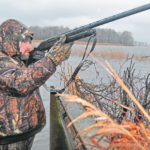
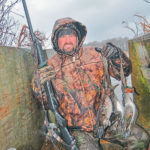
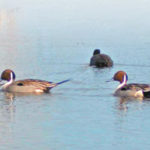
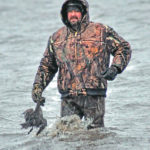
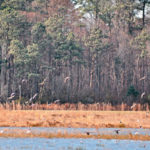
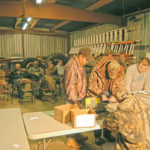
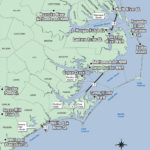

Be the first to comment